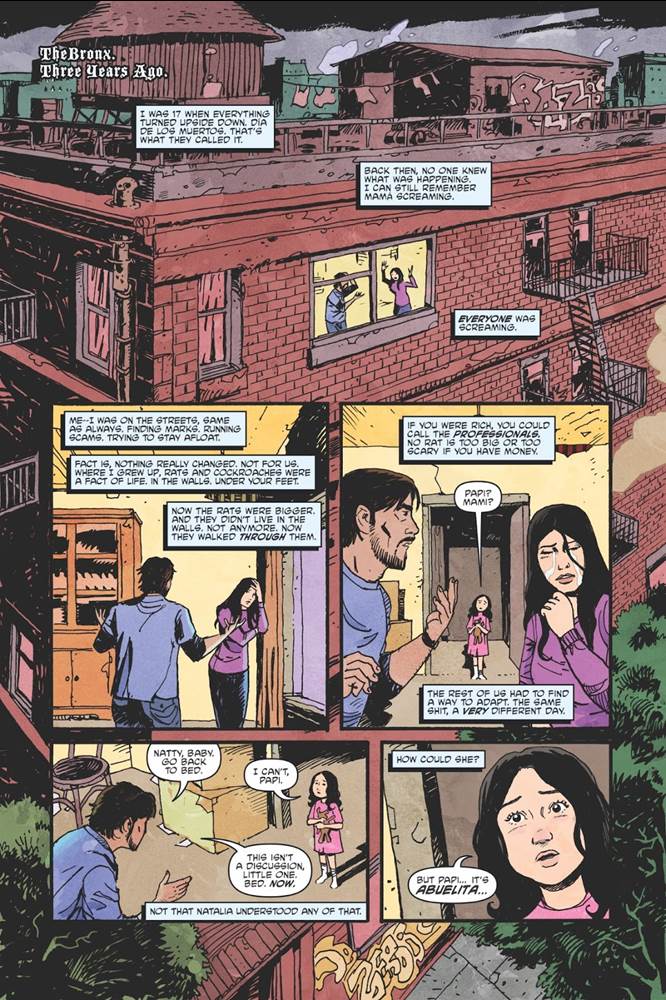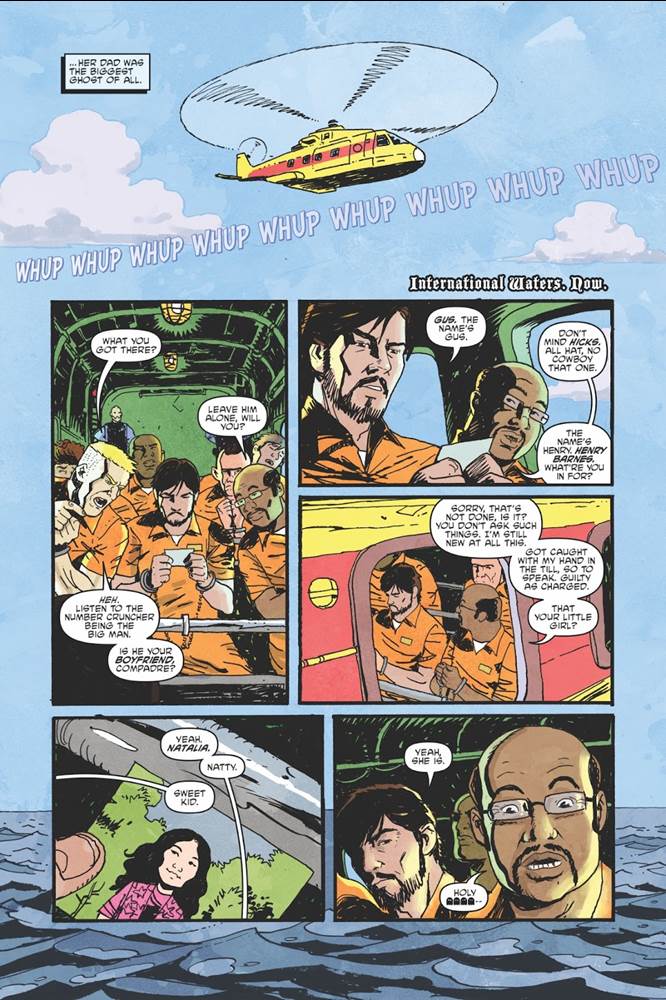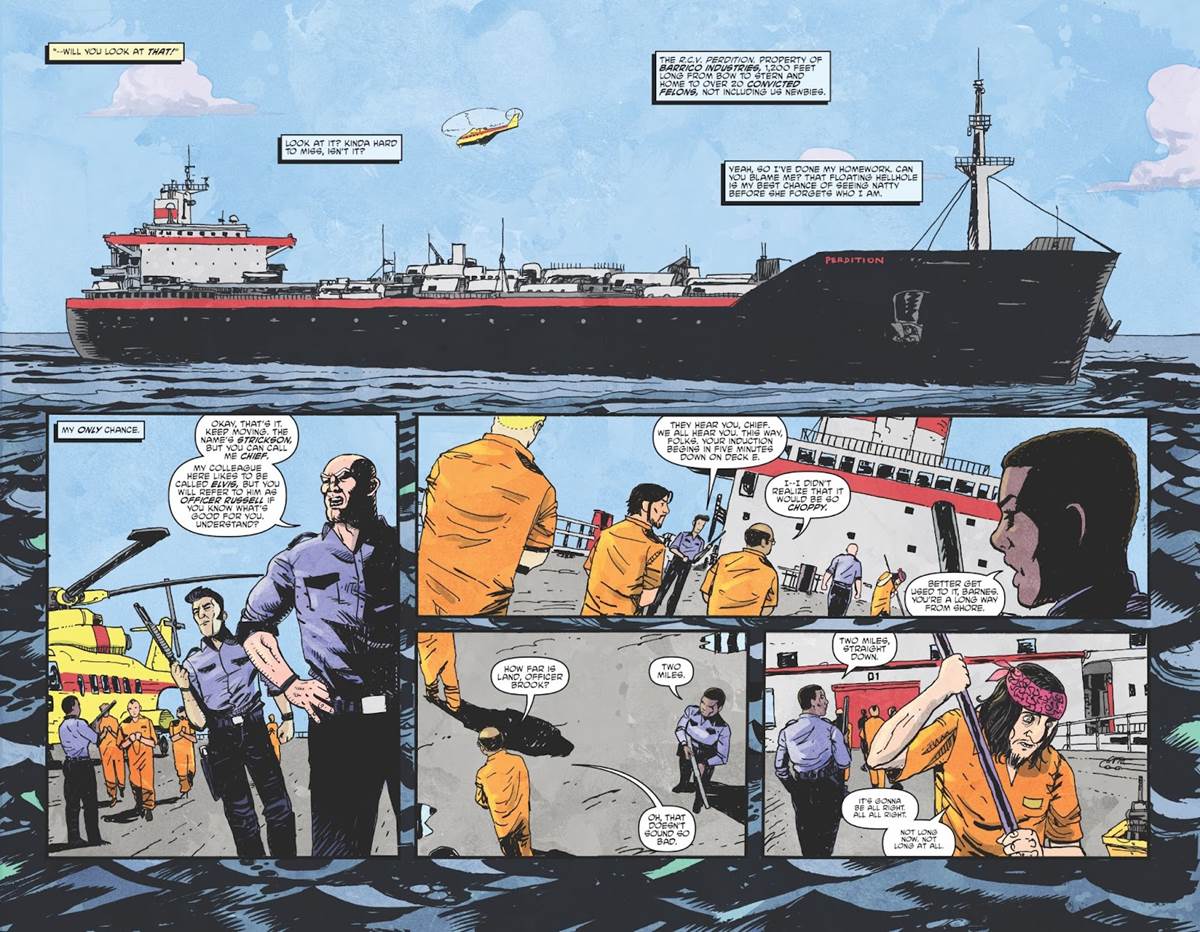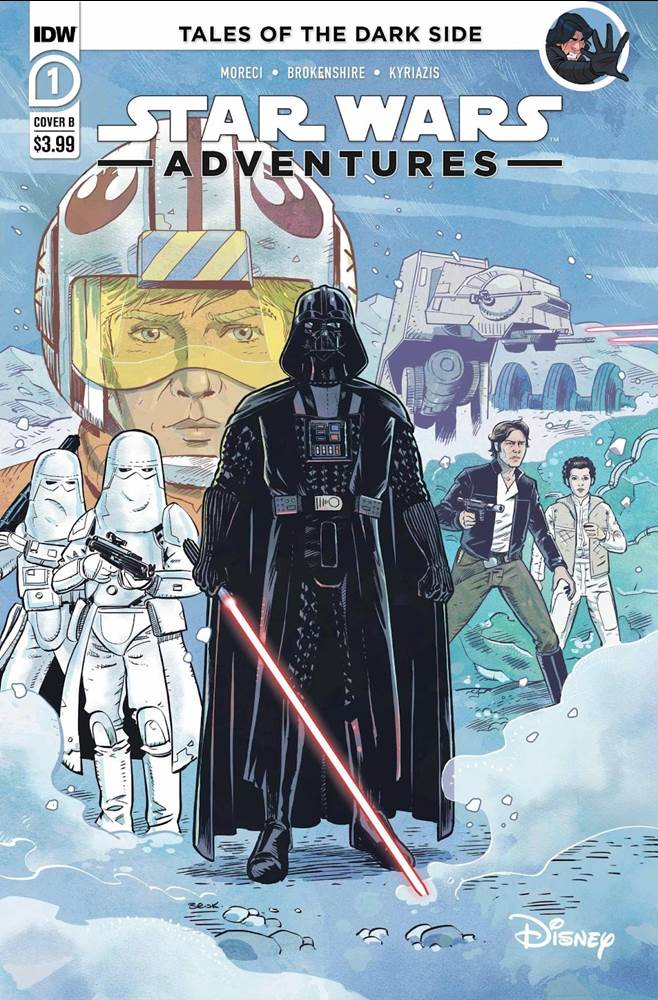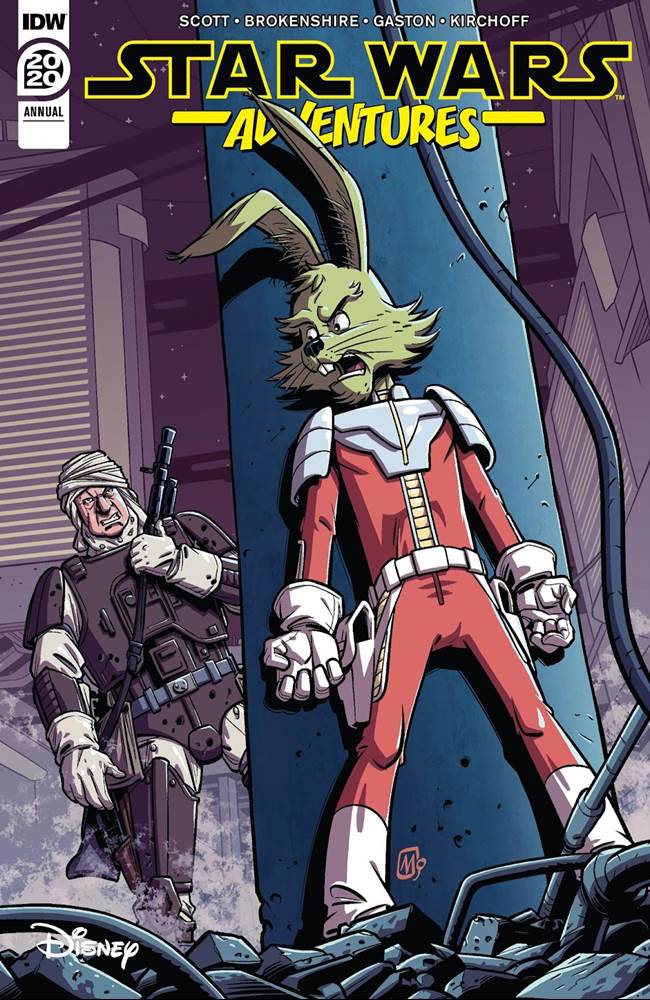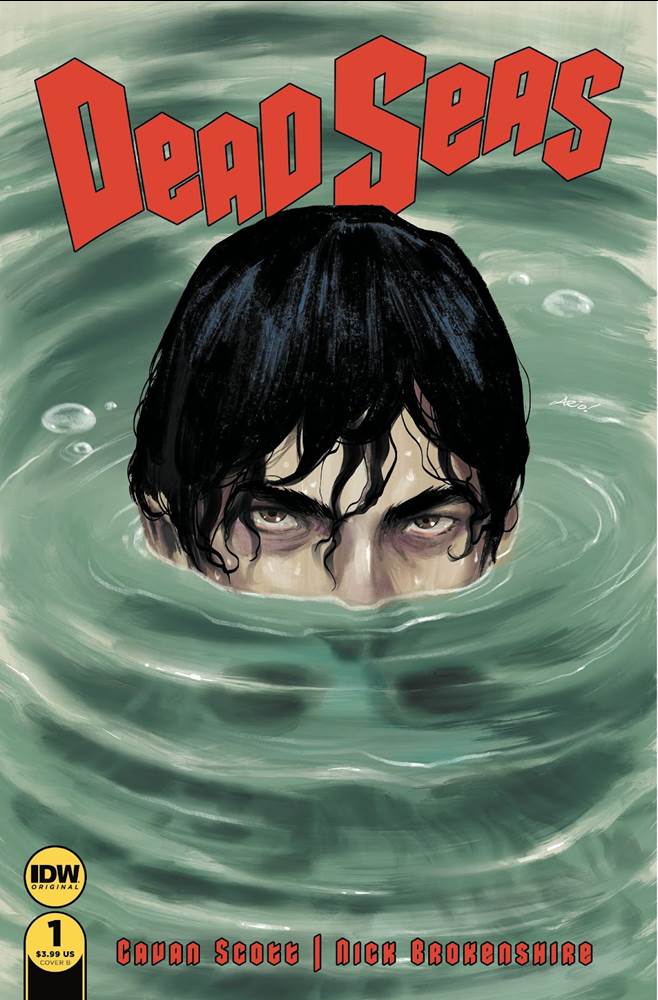Interview: “Dead Seas” Artist Nick Brokenshire Discusses Working with Cavan Scott and His Favorite “Star Wars Adventures”
Talented Scottish-born comic-book artist Nick Brokenshire is probably best known for his work on IDW’s Star Wars Adventures series, but he has also contributed to The Once and Future Queen for Dark Horse, Heavy Metal, 2000 AD, IDW’s Judge Dredd, and Robotech. Now he has partnered with acclaimed writer Cavan Scott, his collaborator on Star Wars: Tales from Jabba’s Palace, for the new IDW comic miniseries Dead Seas.
This week I had the terrific opportunity to interview Mr. Brokenshire about Dead Seas, the influence of Ghostbusters on his work, and his favorite stories from Star Wars Adventures.
Mike Celestino, Laughing Place: Can you tell me about your history as a comic artist? How did you get into the business and what are some of the previous things you’ve worked on?
Nick Brokenshire: I came into comics, as an artist, late. I’ve always been into comics [as a reader] since I was a little boy, but I was actually a high school art teacher, and then in my 30s I decided to take the leap and try and do the thing that I’d always wanted to do, which was become a comic-book artist. I figured, ‘If I’m gonna work so hard, then why not work hard at something that you really want to do?’ I worked on an indie series called Amelia Cole with a couple of writers called Adam Knave and D.J. Kirkbride. And that was basically me learning how to draw comics, but we got picked up very quickly by IDW. So essentially the first thing I’d ever worked on was my first pro job, even though I was not at pro level. It’s just one of these things that happened. We did five volumes of that, so by the time we finished it, I was up and running, you know? Then around 2015, we started a series for Dark Horse called The Once and Future Queen, which then came out in 2016. Not long after that I started on Star Wars Adventures. I was doing side jobs for 2000 AD and Heavy Metal, as well– bits and bobs here and there. So basically a very rapid ramp into the business. I was probably pro level by about 2016, so well into my 40s. [laughs] As opposed to a lot of youngsters who are phenomenal by the time they’re 19. Now I’ve been in the game [for] about ten years.
LP: How did you first become partnered with Cavan Scott? What is it like working with him as a writer?
Brokenshire: We’ve known each other for a fair few years now. I think I became aware of him because of Star Wars Adventures. When I was brought on to write and draw strips for IDW, I just noticed his name as one of the writers on some of the issues that I’d been appearing on, and I enjoyed his stories. I didn’t know anything about him, so I reached out to him, and then after that I realized that he was quite a seasoned writer, not just in comics but in prose and audio dramas and radio and script-writing. That all came afterwards, so I actually befriended him not knowing anything about this. I just reached out to him on LinkedIn, of all things. I never use that platform, but we just got chatting and then before we’d even done anything with Vader’s Castle, we were actually already talking about Dead Seas, which at the time was called Ghost Ship. A long time ago, we started discussing this. I can’t quite remember why; we just did, and started batting out ideas backwards and forwards. Then, subsequently, because we had started this relationship, he said, ‘Would you like to come and do some stuff on the Vader’s Castle stories?’ And that’s how I got involved in that. Since then we’ve appeared on panels at [Star Wars] Celebration [together]. We’ve become pals.
LP: When you and Cavan first started talking about the concept for Dead Seas, what were your initial thoughts on how you should approach the art style for the comic?
Brokenshire: All I remember is he gave me the premise of these ghosts on this ship, and I just immediately started to draw things in my sketchbook. I thought to myself that if I were to do anything with ghosts, I wouldn’t want them to just be people floating around. I wanted to make them weird, I guess inspired by some of the weirdness in Ghostbusters, rather than them just being these specters. I wanted them to be really twisted versions of humans, perhaps rather than them being versions of themselves when they died. I was thinking more of psychic versions of themselves– if something weird went on in their mind, then that’s what they became in the afterlife. Therefore they could be monstrous, or they could be totally unexplainable. When I did the Abuelita, the grandmother on the second page, I initially drew her with bits of her wheelchair sticking out of her. I thought it doesn’t have to be organic; it could be whatever is in her psyche, even though that didn’t make it into the final thing because I couldn’t fit it in properly. So I started drawing lots of weird ghosts, and I think that then fed into Cavan’s ideas for the book a bit more.
LP: I definitely noticed the Ghostbusters influence, and I even brought it up with Cavan when I spoke with him earlier. What about the designs of the characters we meet in this story? How were their looks created?
Brokenshire: That, again, was quite organic in terms of the back and forth with Cavan and I, because when he first gave me the breakdown of the idea, the main character was just some sort of street-level American hood. Then when he said that the ship would be out maybe near the Caribbean or in the Atlantic somewhere, I said, ‘Why don’t we make the character Latino, and perhaps of Colombian or Venezuelan extraction?’ Because I am British/Venezuelan, so that way we can incorporate some groovy, snappy language in Spanish as well as English, just to give it flavor. So the main character became this dashing Latino antihero, based on a handsome version of me. [laughs] And much taller, as well. [laughs] No, he’s not based on me at all, but that’s kind of where that came from. Actually, as far as the characters are concerned, that’s probably my biggest influence. I know that [Cavan] had the basic idea of the owners of the ship company being these corrupt people. That stuff was in place already, but [the Latino heritage is] what I brought to the table.
LP: What about the design and layout of the ship itself?
Brokenshire: Apart from one specific detail, Cavan left that to me. I have an affinity for that sort of thing, because my dad was in the oil industry. There were a lot of ships in my life, because he worked in the North Sea and in the Gulf of Venezuela off Maracaibo. There were always ships; I was always on ships, and my sister is a seafarer. It’s just a thing that’s part of my life. I’m not a seafarer, but I wish I was, in some ways. As far as layout and the look of ships, I’ve got a feel for that stuff. I based the ship itself on existing oil tankers. I slightly changed scales a little bit, because it’s supposed to be bigger than an oil tanker, this thing. Yeah, that’s all down to me, I think, but there are details with regards to compartments in the ship later on that Cavan had to tell me about. That comes later.
LP: In addition to penciling and inking the artwork, you’re doing the coloring on this comic as well. What are the advantages of doing that yourself rather than working with another artist?
Brokenshire: That’s a really good question. There are a lot of advantages and a lot of disadvantages, the main disadvantage being time. You’re cutting down on your time in general, if you’re gonna do all the penciling, inking, and coloring– unless you have an incredibly forgiving publisher, which IDW has been. They’ve given us a massive amount of lead time in order to allow me to do everything, but not everyone does that. So the advantage for me in the art style, compared to some of my Star Wars stuff for example, it’s a more rough-hewn style. It’s choppier and a little bit more organic. It’s just rough around the edges, and that is in part deliberate. I wanted it to [have] a bit more of a rough-and-ready look to the story because of the characters, and that also influenced my color choices. The way I drew it is because I knew some of the things I would do color-wise. So because I don’t have to explain to a colorist, ‘Look, this is what I’m going for,’ and then be disappointed when it doesn’t work, which does happen, I don’t have to worry about that. I know exactly what I’m going for and what I’ve got in my head. Now saying that, you get a fantastic colorist and they will improve your work. But I just knew what I wanted out of this, so it was easier to do it this way.
LP: When I spoke to Cavan, he cited the movie The Poseidon Adventure as one of the chief influences on this comic, but how would you pitch it to someone who doesn’t know anything about it yet?
Brokenshire: I like to pull the Ghostbusters card– it’s basically Prison Break meets Ghostbusters on a sinking ship. There’s a certain dreaded futility in the whole situation, because the ship is sinking and you’ve got all these horrendous criminals running around, followed by even worse monsters chasing them. That’s how I see it. Poseidon Adventure– I saw that when I was a kid, but I didn’t connect with it as much as Cavan does. I do remember enjoying it, but I tend not to say The Poseidon Adventure one, because I don’t know if me and my friends get that reference. I think that would work for me: Ghostbusters meets Prison Break.
LP: I’d love to ask you one Star Wars question while I have you: which Star Wars story that you contributed to would you say is your favorite? Which is the one that you recommend to people the most?
Brokenshire: Can I cheat and give you two? The obvious one is when they rebooted Star Wars Adventures and I was in issue #1. They asked me to write the attack on Echo Base from Vader’s perspective, and so I took whatever little bits and bobs I found that had already been written about that, and then just expanded on it. That included those little [Galaxy of Adventures] shorts that they did for YouTube. There’s a bit where you see Vader breaking into Echo Base using the Force, so I pick up from there. I’ve got them arriving on Hoth and then basically following Vader into the base while the secondary characters are Luke and Han and Leia, and they’re running away. It was really fun to do that, because as you know, everything is canon now. So I was writing a piece of canon, because I wrote it as well. In that one, I got to do some interesting things. I was able to juxtapose images of Vader walking into the room where the Bacta tank is [against] visuals of Anakin in his Bacta tank, then Luke in the Bacta tank and Anakin crawling out of the fire and Luke crawling along through the snow. Just putting them together– I’d never seen that done before, so that was fun. And I got to write that scene, you know what I mean? That whole period.
That’s my obvious answer, but my true answer is I did a story for the Star Wars Adventures Annual called “A Rebel Bounty." It’s the favorite thing that I’ve done because I tried to inject Star Wars with a flavor that I hadn’t seen before. They let me invent a new religious sect. The implication of the story was that there’s another sect within the galaxy that has been there during all the goings-on. They’re called the Order of the Sight Voltaic, who have created this religion based around technology, connecting it back to light and electricity– connecting the energy of life to the divine, so to speak. There are little implications in my story that they have had some kind of influence on the development of droids, which is perhaps why they may have the ability to grow personalities, and have consciences. I didn’t think they would let me do it, because I thought, ‘This is going a little bit out of the regular Star Wars field.’ But then I thought to myself, ‘In the 70s, they did so many wacky things.’ I just thought, ‘I’ll give it a go.’ There’s a scene in it that’s a little bit like Star Wars meets TRON. I love that issue, and I like what I did art-wise. It’s very clean.
The first issue of Dead Seas will be released via IDW on Wednesday, December 21st. Numerous collected editions of Star Wars Adventures are available from IDW as well.




